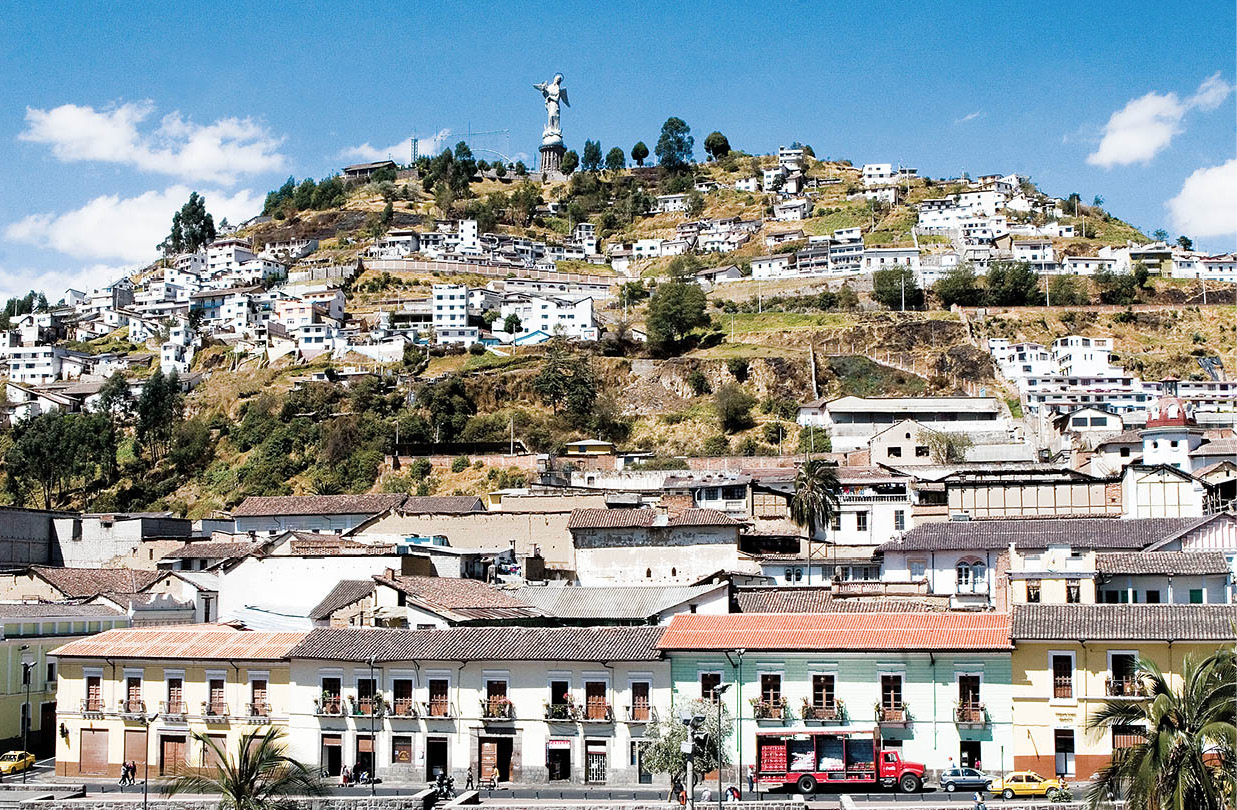When the Spanish conquered Ecuador they brought with them priests from different monastic orders: Franciscans, Augustinians, and Dominicans, and later the Jesuits. Within 50 days of the foundation of Quito in 1534 the Franciscan monks had begun constructing their own church. This was the first classic example of colonial architecture.
Each religious order was assigned land by the Spanish crown and each competed against the others in the construction of churches, convents, and plazas. Fray Jodocko Ricke, a Flemish Franciscan, set up an informal school for indigenous children to teach them religion and art. It was the first school of fine arts in South America.
The Franciscans discovered the creative skills of the indigenous people and also brought over talented converted Muslims. Sun motifs (the Sun being the principal Inca god) are commonly found alongside Madonna and Child representations, and ceilings often show Mudéjar influence. This blend of European and indigenous ideas created the Quiteño school of art and architecture.
The Jesuits strengthened the arts movement when they arrived in 1586. In the following 250 years ornate churches with richly adorned sacristies, carved choirs, and fine paintings flourished. Workshops and guilds were established and by the middle of the 18th century: 30 guilds in Quito controlled all artistic production.

A view of Panecillo from Quito’s old town.
Corrie Wingate
The School of Quito